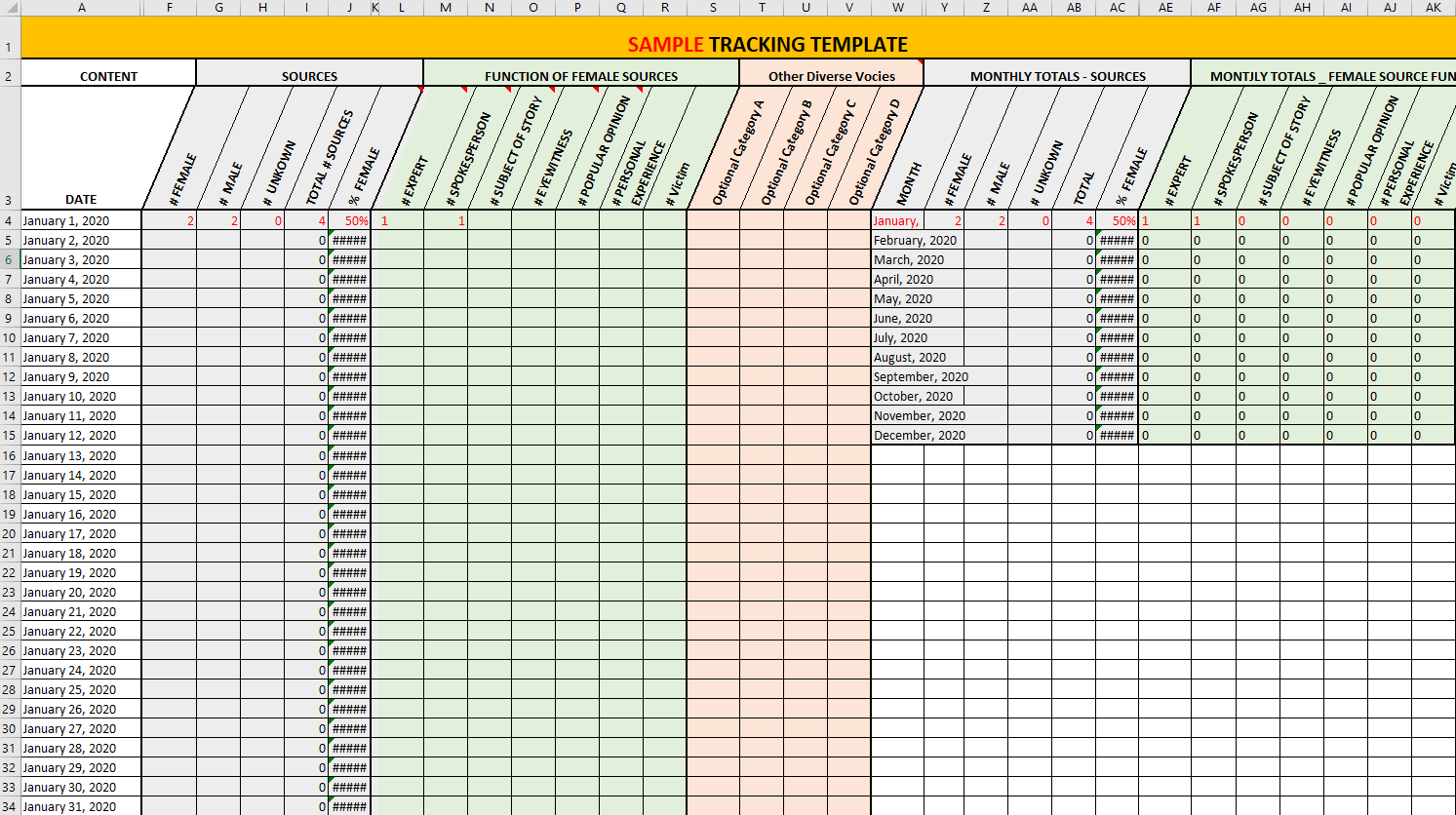Tracking
Successfully increasing the number and frequency of women sourced in news content often comes down to tracking the gender split of sources. The initial benchmarking reveals the true extent of the problem, while helping to correct your assumptions and misconceptions. But consistently counting is what keeps the issue top of mind – and that’s what newsrooms and journalists report as being a key driver of change.
Newsrooms implement tracking differently, depending on their goals and resources. While methods vary widely, there are three overarching approaches: manual tracking, semi-automated tracking, and automated tracking based on computer algorithms.
Manual
Semi-automated
Automated
Bloomberg had previously tried to tackle the lack of women's voices by building a database of female sources. The effort was successful in fits and starts until they started to collect and share data. Senior Executive Editor, Laura Zelenko, who leads the effort explains:
“We knew we needed to find a way to make it stick, and we needed to make it global. What made people more inclined to focus on it was when we showed them the actual benchmarked numbers, our actual record of sourcing women. Then the reporters were more apt to participate. Now we review the data constantly.”
TRACKING BEST PRACTICES
Regardless of the tracking method you use, keep these best practices in mind:
Count what you can control: For some news stories you have little choice over who to source (i.e. stories about political candidates). Focus on tracking the gender of sources that are in your power to change.
Share the results: Be transparent with the newsroom. Regularly share the latest results of the tracking, so staff can see where there is progress and work still to be done.
Inspire friendly competition: Share results between journalists and news teams so staff can track how they are doing against their peers.
Use tracking to spark conversation: Use the results to engage staff and individual journalists in conversations about their workflow and process they use to identify sources.
Promote self-tracking: Tracking has the greatest impact when news teams and individual journalists track content.
1) MANUAL TRACKING
Newsrooms report that counting the gender of sources by hand is the most accurate and impactful method. When journalists and news teams manually track content regularly, they are more likely to change their behavior on a day-to-day basis. Human oversight also ensures that nuances, such as type of source or the gender attached to a name, are captured. The prospect of manual tracking can be daunting to news producers, but it doesn’t have to be.
The 50:50 Project
The BBC's 50:50 Project has invented a remarkably successful methodology that only requires a few minutes each day to tally the ratio of female and male sources.
Originated by BBC news program, Outside Source, the 50:50 Project has helped hundreds of teams inside and outside the BBC reach gender parity in the sources they solicit for their stories.
Source: BBC Newsroom, photo credit: BBC
Reflect Reality’s Tracking Template
Reflect Reality created a sample tracking sheet, which news teams and journalists can customize to suit their own needs.
2) SEMI-AUTOMATED TRACKING
A second option is to build tools into a newsroom content management system that allow editors or journalists to simply tally the gender of their sources as they file a story. The data feeds into a master database which stores the results by journalists/department. The act of tallying helps staff and reporters remember to include women as sources, and progress can easily be assessed across the newsroom.
Bloomberg developed a tracking tool which editors utilize every time they publish a story that quotes, cites or paraphrases at least one female expert. The tool adds a code that tracks progress by team, region or individual reporter. The Toronto Star is building a similar tool, which they refer to as a ‘memory jog.’ Reporters are asked to tag stories against a variety of metrics, adding one that relates to women’s voices is not difficult.
“We want to be encouraging. We have a metric that every journalist can view that shows how many stories they have published that quote or cite a female expert. It’s there to encourage people to do more, as opposed to getting in trouble for not doing enough. Managers can use that metric to help get more traction on their team — that is the tone that we want to set.”
3) AUTOMATED
Highly automated software tools that track the gender ratio of sources have also been developed. Algorithms use natural language processing or machine learning technology to scrape large quantities of news content instantly. For newsrooms that have the capacity, automated tools can provide the ongoing data that is needed to drive awareness, without having to rely on staff to count.
An example is a bot the Financial Times built that automatically warns journalists and editors when content is lacking female sources. Newsrooms with extensive resources will find such solutions alluring. For others, the financial investment and staff time needed to create effective algorithms that can reliably decipher the gender of pronouns may be a nonstarter.















